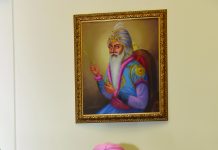Recent Supreme Court orders in two separate cases once again bring into sharp focus the misuse of the colonial-era sedition law muzzle media freedom and social activism, writes MUDIT MATHUR

The draconian law of sedition was designed to unleash terror and crush nationalist voices that rebelled for freedom of our country from the cruel British colonialism. The father of nation Mahatma Gandhi and nationalist icon of freedom movement Lokmanya Bal Gangadhar Tilak were convicted for six years under this sedition law through their powerful expressions in “Young India” and “Kesari” awakening the conscience of the people to get rid from atrocious British Rule.
Many nationalists faced the fury of colonial mechanism of muzzling freedom and dissent during pre-independence days of freedom struggle but how such laws still survive on statue books of free India is really hard to believe. It’s always suits ruling political classes as police acts as its extended arm to abuse law to muzzle dissent and thwart healthy political discourse.
Celebrated and widely respected TV anchor Vinod Dua was a lucky journalist in whose support the apex court stood and quashed the sedition case without any trial but many weaker classes of journalists, writers, professors, students, Dalits, Adivasis and Human Rights activists are not lucky enough to get rid of the clutches of misuse of draconian laws and its extended Indian arm UAPA Act, 1967 and its auxiliary legislations. Unfortunately, our politicians remained in colonial hangover even after 74 years of independence.
In this context, the latest Supreme Court ruling quashing sedition FIR in Vinod Dua case, does not inspire much confidence and hope in the journalistic circles to check the abuse of these draconian laws that designed and enacted in colonial era with authoritarian intent to suppress the liberty of the citizen and terrify them. BJP government filed sedition charges against six senior and reputed media persons including Zafar Agha, Vinod Jose, Anant Nath, Paresh Nath, Mrinal Pande and Rajdeep Sardesai for “misleading the public.” Similar cases were registered against many tribals rights, environmentalists and human rights activists besides targeted action against student’s bodies for their ideologically divergent views.
These sedition laws referable to Sections 124A together with 153A and 505 of the Indian Penal Code which largely misused for muzzling dissent of the adversaries to serve vested personal interests of political classes. An atmosphere of fear looms large over expression of free flow of thoughts and information due to growing state’s intrusion into the privacy of the citizens. The range of expressions termed seditious extended from mere holding of posters to social media posts, to raising slogans and private communication.
As many as 65 journalists were targeted and charged under various legislations threatening large scale victimisation just aimed at quieting factual reports during between 15 March 2020 and 10 July 2020 during strong pandemic surge.
The blast of rapid revolution of information techniques opened up new horizons leading to embarrassing exposures of unpardonable sins of ruling classes on social media platforms and their repressive retaliatory action pulling them behind the bars under sedition laws have regenerate the debate over continuance relevance of post-colonial sedition legislation in free India as it was enacted to crush our national movement.
“It’s time to define the limits of sedition. We are of the view that the ambit and parameters of Sections 124A, 153A and 505 of the Indian Penal Code would require interpretation, particularly in the context of the right of the electronic and print media to communicate news, information and the rights, even of those that may be critical of the prevailing regime in any part of the nation,” the bench comprising Justices Dhananjay Y. Chandrachud, L. Nageswara Rao and S. Ravindra Bhat observed. “The sedition FIRs by Andhra Police against appeared to be an attempt to “muzzle media freedom,” the apex court said while entertaining the pleas raised for interim protection from arrest under sedition charges by two Telegu TV channels- TV5 News and ABN Andhra Jyoti.
Section 124A deals with words, signs or visual representation that brings or attempts to bring “into hatred or contempt or excites disaffection against the Government” and can be punished by imprisonment for life with a fine or imprisonment that may extend to three years with a fine.
“It is clear that thousands of people have suffered the consequences of these charges. Our attempt is to sheen a light not just on the fact that the process is the punishment but also the traumatic impact that these charges have on people’s lives,” said Lubhyathi Rangarajan, an independent lawyer and researcher based in Delhi who heads the project to create database on sedition and related cases impairing fundamental rights of common man. Other members of his core team for research and analysis comprise Tejaswita Kharel and Harini VS with final-year law students at National Law University, Delhi and KLE Society’s Law College respectively. Anant Sangal, Anasuya Nair, Ashna D, Gayatri Gupta, Priankita Das, Raghav Sengupta, Shashankaa Tewari, Shloka Suda & Sonali Chugh contributed to the data-mining process.
Mumbai based journalist Kunal Purohit, in his research paper submitted to “article-14”, committed to work for justice, constitution and democracy, made stunning revelations, “Six sedition cases during the farm protests, 25 during anti-CAA protests, 22 after the Hathras gangrape, and 27 after Pulwama attacks were registered. While cases in Uttar Pradesh and Karnataka revolved around the theme of hurting sentiments pointed at breach of feelings of “nationalism,” whereas, central and eastern India largely witnessed application of sedition law against those involved in left-wing extremism and protests over land acquisitions.
The chronological study of sedition cases over the last decade reveals a 28 per cent rise in such cases in violation of Supreme Court guidelines, particularly against critics and protesters since 2014. Six journalists and former state foreign minister Shashi Tharoor were targeted on 28 January 2020 in 10 First Information Reports (FIRs) across five BJP ruled states under sedition law where the police controls were in its hands. A flood of such cases against critics and dissenters, coinciding with the rise to power of
Prime Minister Narendra Modi since 2014 are evident on records.The database has found that of nearly 10,898 individuals against whom sedition cases were filed over the last 10 years, 2,000 were mentioned by name, including nine minors, and the rest “unidentified” with 816 cases registered. The post-2014 trend is that those named in these cases include opposition politicians, students, journalists, authors and academics.
The analysis of 519 sedition cases filed under the current BJP regime over six years, compared to 279 filed between 2010 and May 2014 during the tenure of the previous Manmohan Singh led UPA-2 government. Of the 279, 39 per cent were filed during the Kudankulam Protests in Tamil Nadu, against a nuclear plant, and in relation to left-wing extremism across India. It examined the range of expressions found seditious extended from mere holding of posters to social media posts, to raising slogans and private communication.
In nearly 30 per cent of cases, a variety of other laws, such as the Unlawful Activities Prevention Act, 1967, Prevention of Damage to Public Property Act, 1984, and the Information Technology Act, 2000, Prevention of Insults to National Honour Act, 1971, Epidemic Diseases Act, 1897, Disaster Management Act, 2005 were added to the FIRs.
The study highlights following facts with regard to reckless and malicious application of sedition laws on the citizens while exercising their right to free speech and expressing dissent over policies of the government:65 per cent of nearly 10,898 individuals in 816 sedition cases since 2010 were implicated after 2014 when Modi took office. Among those charged with sedition include opposition politicians, students, journalists, authors and academicians.
96 per cent of sedition cases filed against 405 Indians for criticising politicians and governments over the last decade were registered after 2014, with 149 accused of making “critical” and/or “derogatory” remarks against Modi, 144 against Uttar Pradesh (UP) chief minister Yogi Adityanath.
A 28 per cent increase in the number of sedition cases filed each year between 2014 and 2020, Modi’s time in office, compared to the yearly average between 2010 and 2014, the second term of the United Progressive Alliance (UPA) administration.
Much of this increase is due to a surge in sedition cases after protest movements, such as those against the Citizenship Amendment Act (CAA), 2019 and the rape of a Dalit teen at Hathras in UP.
During the anti-CAA protests, 22 of 25 sedition cases involving 3,700 people were filed in BJP-ruled states. After the Pulwama attack, 26 of 27 sedition cases involving 42 persons were filed in BJP-ruled states.
Of the five states with the highest number of sedition cases, a majority were registered during the BJP’s time in power in four of them—Bihar, UP, Karnataka and Jharkhand.In UP, 77 per cent of 115 sedition cases since 2010 were registered over the last four years, since Yogi Adityanath became the chief minister. More than half of these were around issues of “nationalism”: against those who protested the CAA, for shouting “Hindustan Murdabad”, allegedly celebrating Pulwama attack and India’s loss in 2017 ICC Champions Trophy.
In Bihar, between 2010-2014, the majority of sedition cases related to Maoism and counterfeit currency. After 2014, 23 per cent of sedition cases were against those who protested the CAA, against celebrities who spoke up against lynching and intolerance and those who allegedly raised “pro-Pakistan” slogans.
“Our sedition database tracks all cases registered between 1 January 2010 and 31 December 2020 under the Indian Penal Code (IPC)’s section 124A, which deals with sedition, a 151- year-old colonial law used against Indians by the British government,” claims Kunal Purohit in his extensive study.
Relying on the data former a Supreme Court Judge Madan Lokur commented, “The sedition law is not only misused but abused. It’s a great tragedy, more particularly so because from the brief description of cases, it would appear that many of them would run afoul of the law laid down by the Supreme Court in the Kedar Nath Singh and Balwant Singh decisions.”
“The decisions of Kedar Nath Singh vs State of Bihar and Balwant Singh & Bhupinder Singh vs State of Punjab made it plain that the sedition law could only be used when there was incitement to violence, or if there was intention to create disorder,” Justice Lokur emphasised, who also joined in the
Advisory Board of organisation along with eminent jurists and judges, academicians, retired IAS and IPS officers, prominent columnist and journalists.
The UP government was particularly harsh on those criticising the government and party leaders, including Yogi and Modi. At least 18 sedition cases were filed against 149 such critics. The list of those accused in UP of sedition include former head of the Congress’ digital team Divya Spandana and Aam Aadmi Party member of parliament Sanjay Singh. Leaders of the Patidar and the Jat agitations were charged with sedition in 2015 and 2016.
In 2017, cases in Haryana shot up on account of the protests against Gurmeet Ram Rahim Singh’s conviction. The Pathalgadi movement in Jharkhand led to hundreds of Adivasis being charged with sedition in 2018. After coming to power in December 2019, the Hemant Soren-led government had recommended dropping these cases but these charges are yet to be formally withdrawn.
Over the last several years, India’s rank in the annual World Press Freedom Index by Reporters Without Borders (RSF) has dashed down to lower and lower. In 2020, India was placed 142nd out of
180 countries. The COVID-19 lockdown has not improved the situation. Far from it — it has rather empowered and emboldened the Indian government, security forces and private citizens to suppress freedom of speech, cement the oppression of marginalised groups and prevent reporting on government mismanagement and human rights violations at all costs.
These facts emerged from a report of Human Rights Law Network that organised a deep study into the harassment cases against journalists during Covid -19 pandemic In Partnership with Press Club of India, Delhi Union of Journalists, Indian Women Press Corps, Brihmumbai Journalists Union, Mumbai Press Club and Media Studies Group. The annual
World Press Freedom Index is “based on an evaluation of pluralism, independence of the media, quality of legislative framework and safety of journalists in each country and region.”

VEXATIOUS ARCHAIC LAW THAT ABRIDGES CONSTITUTIONAL GUARANTEE OF FREE SPEECH
THE TRACES of conditions emerged leading to enactment of sedition law in the Indian penal Code as Section 124A by the colonial British administration in 1870 against Indian nationalist leaders and revolutionaries in wake of call for freedom as our birth right gained momentum after the first mutiny of 1857 that was overpowered by British Army being unplanned, spontaneous reactionary rebellion effort. But despite oppression the nationalist sentiments were gaining ground with the propagation of sprit of freedom through powerful writings of Mahatma Gandhi and Bal Gangadhar Tilak in their newspapers Young India and Kesari in Marathi language.
Thomas Macaulay (Famous for his Macaulay Minute on Indian Education 1835) drafted the Penal Code in 1837. Sedition was placed in the Penal Code 1837 as Section 113. Later, it was omitted, to only be re-added in 1870 back in the Penal Code by an amendment introduced by Sir James Stephen. British Rule in India had introduced this section on sedition under the title “Exciting Disaffection”.
Section 124A of IPC – Sedition
“Whoever, by words, either spoken or written, or by signs, or by visible representation, or otherwise, brings or attempts to bring into hatred or contempt, or excites or attempts to excite disaffection towards the Government established by law in India shall be punished with [imprisonment for life], to which fine may be added, or with imprisonment which may extend to three years, to which fine may be added, or with fine.”
Prior to messenger of nonviolence Mahatma Gandhi in 1922, Bal Gangadhar Tilak, known for his criticism of the British, was also charged under Section 124A for his views in Kesari in 1897. The political history India recorded it as an important moment that marked the criminalisation of dissent in the grand spectacle of a political trial, setting the pattern for legal engagement with discursive violence in the years to come.
Tilak was charged for the publication of two texts— ‘Shivaji’s Utterances’, a poem authored under an alias, and an unsigned report on the June 1897 Shivaji festival, at which Tilak and C.G. Bhanu, a notable Pune intellectual, spoke. This, the Bombay government claimed, incited ‘disaffection’ against the regime. The prosecution was probably prompted by the assassination of officers W.C. Rand and Charles Ayerst shortly after the festival. Tilak’s sedition trial is historically famous as in this case, an attempt to excite feelings of enmity against the government was also brought under the scope of Section 124A terming it is seditious. Hence, it widened the understanding of Section 124A. Tilak was sentenced to 18 months of rigorous imprisonment.
The second sedition trial on Tilak took place in 1908 wherein two Kesari articles, titled “The Country’s Misfortune” which he published on 12th May 1908 and “These Remedies Are Not Lasting” which was published on 9th June 1908 were made basis to prosecute him under the newly drafted Section 124A, he was sentenced to six years of imprisonment in Burma (Now, Myanmar).
Its most famous trial was Mohandas Karamchand Gandhi, who in March 1922 faced trial for sedition for three articles he wrote in Young India, a weekly paper that he had started. At the trial, Gandhi called sedition the “prince among the sections of the IPC designed to suppress the liberty of the citizen.” It was, he added, his “privilege” to be charged under the section “as some of the most loved of India’s patriots.”
The epitome of nonviolence, Mahatma Gandhi too was imprisoned for six years for his articles in his newspaper, ‘Young India’ on the charges, “Bringing or attempting to excite disaffection towards His Majesty’s Government established by law in British India.” Thus, there is no doubt that the legislation of sedition was enacted to muzzle freedom of expression and dissenting voices.

NEHRU OPPOSED SEDITION LAW
The retention of the law in an independent India had been a matter of a aggressive debate—the country’s first Prime Minister Jawaharlal Nehru called the provision “obnoxious” and “highly objectionable” and had added that “the sooner we get rid of it the better.”
POLITICAL DISCOURSE REFLECTS DIVERGENT VIEWS
The abolition of Section 124A of IPC dealing with sedition cases has become controversial when the Congress’ manifesto on the eve of the 2019 general elections promised to repeal it. Prime Minister Narendra Modi quickly ridiculed the move and accused the Congress of “stooping low to come back to power.”
Over the last six years to 2020, senior leaders of the BJP, including Modi, have backed the sedition law. Other senior leaders too joined chorus with him and announced the party planned to “make provisions of the sedition law more stringent to check anti-national activities.”
VOICES AGAINST SEDITION LAW
A day after the Supreme Court’s ruling in the Telugu TV channels’ case, former Union Law Minister Kapil Sibal said, “At last the court acknowledges that sedition law needs a relook especially on its application to freedom of the press.”
Dia Mirza too joined the dissenting voices, saying, “The sedition law is misused repeatedly and should be scrapped.”
Responding to the Supreme Court ruling junking sedition case against journalist Vinod Dua, Pritish Nandy wrote on Twitter: “The sedition law itself should be junked. It’s a relic of colonial times. Not apt for an independent India.”
Historian Irfan Habib tweeted saying, “Sedition law makes no sense in an independent govt, should have been scrapped long back. Sadly, such laws suit all governments, so they stay, the only difference is that some governments use it more viciously.”
SC TO TEST CONSTITUTIONAL VALIDITY OF 124-A OF IPC
Amid national debate over abused draconian law of sedition for muzzling free speech, a three judges’ bench of apex court issued notice the Union Government and Attorney General on a writ petition filed by two journalists challenging validity of colonially inherited law.
The Supreme Court bench headed by Justice Uday Umesh Lalit comprising Justice Indira Banerjee and Justice K.M. Joseph with him entertained a writ petition filed by two journalists Kishorechandra Wangkhemcha and Kanhaiya Lal Shukla from north eastern state Manipur and Chhattisgarh challenging the constitutional validity of Section 124-A of Indian Penal Code 1860.
The petition challenged the constitutional validity of section 124-A of the Indian Penal Code, 1860 which penalises the crime of “sedition”. The impugned section clearly infringes the fundamental right under Article 19(1)(a) of the Constitution of India which guarantees that “all citizens shall have the right to freedom of speech and expression.” Further, the restriction imposed by the section is an unreasonable one, and therefore does not constitute a permissible restriction in terms of Article 19(2) of the Constitution and Section 124-A be declared unconstitutional and void by this Hon’ble Court and be struck out of the Indian Penal Code, petitioners prayed.
Wangkhem, who had been facing the BJP-led government’s rage ever since he criticised Prime Minister Narendra Modi, the RSS and state Chief Minister N. Biren Singh on social media in 2018, has been put behind the bars frequently on charges of sedition and under the draconian National Security Act (NSA). The Manipur high court, in April 2019, had quashed the charges against the journalist and released him from jail. This time around, on September 29, the state police yet again took him into custody under a fresh charge of sedition for responding to a viral social media post made by the wife of a high- profile BJP politician of Manipur. He spent a total of over 210 days in custody due to FIRs registered under section 124-A of IPC simply for his statements critical of certain political leaders.
Kanhaiya Lal Shukla is a well-recognised journalist and has written hundreds of articles in various publications. Many of his articles exposed extra judicial killings in fake encounters. An FIR 156/2018 was registered against him on 28.4.2018 at P.S. Kanker, Chhattisgarh under section 124-A IPC and Section 66D of Information Technology Act, 2000. It pertains to certain cartoons that he shared on Facebook. Mr Shukla maintains that the FIR was lodged against him under section 124A by the State to take revenge against him because of his work as a human rights activist and journalist.
Appearing for the petitioners Senior Advocate Colin Gonsalves assisted by Tanima Kishore argued, “In Kedar Nath Singh v. State of Bihar (1962) held apex court held that Section 124-A imposed a reasonable restriction on Article 19(1)(a), falling within the ambit of Article 19(2). The central tenet of the Petitioners’ argument is that while the Hon’ble Supreme Court may have been correct in its finding nearly sixty years ago, Section 124-A no longer passes constitutional muster today and need to be re-adjudicated in the changing global scenario and enactment of various other legislations.”
“The existence of alternative legislation penalising the ‘mischief’ bears on the consideration of the “extent and urgency of the evil sought to be remedied” by the restriction. Alternative legislation eliminates the need to employ Section 124-A to deal with public disorder and violence,” he pleaded.
Petitioners further submitted that Section 124-A as a restriction of freedom of expression falls short of these requirements in that it is neither “necessary” nor sufficiently “provided by law”. Misuse, misapplication and abuse of Section 124-A.
The second relevant circumstance is the frequent phenomenon of misuse, misapplication and abuse of Section 124-A since 1962. Tendency and intention have been so widely interpreted and employed in such a discretionary manner that those merely exercising their democratic rights have faced penal sanction under the section. While abuse of a law, in itself, does not bear on the validity of that law, this phenomenon clearly points to the vagueness and uncertainty of the current law. Additionally, it is submitted that the abuse and the inherent “political association” of this abuse, should be a relevant “prevailing circumstance of the time.”
Citing the examples of repeal of such legislation in other democratic countries, the petitioners argued to take a relook in the changed world order, “The third relevant circumstance is the repeal of sedition sections in comparative pot- colonial democratic jurisdictions around the world. The United Kingdom, the author of sedition laws in India and globally, has repealed the offence of sedition in its own jurisdiction. New Zealand and Ghana have already passed legislation repealing sedition, while the Law Commissions of Canada, Ireland and Australia have recommended repeal to their respective parliaments. In both Uganda and Nigeria sedition has been declared unconstitutional.













